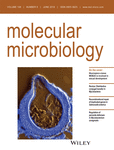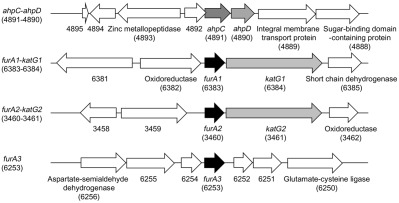Journal list menu
Export Citations
Download PDFs
Front Cover
Issue Information
MicroCommentary
o-Phthalate derived from plastics’ plasticizers and a bacterium's solution to its anaerobic degradation
- Pages: 595-600
- First Published: 21 April 2018
MicroReview
Blending genomes: distributive conjugal transfer in mycobacteria, a sexier form of HGT
- Pages: 601-613
- First Published: 18 April 2018
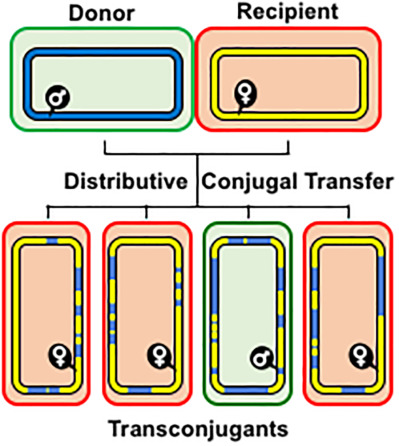
Distributive conjugal transfer (DCT) in mycobacteria results in transconjugant progeny with mosaic genomes more resembling chromosomes following meiotic recombination. Multiple, donor segments (blue) recombine into the recipient genome (yellow) resulting in both macro- and micro-mosaicism. Transconjugants can become donors if they inherit the mating identity locus. This review describes the unique features of DCT and compares it to other mechanisms of horizontal gene transfer.
Research Articles
Evolution of a xenobiotic degradation pathway: formation and capture of the labile phthaloyl-CoA intermediate during anaerobic phthalate degradation
- Pages: 614-626
- First Published: 12 April 2018
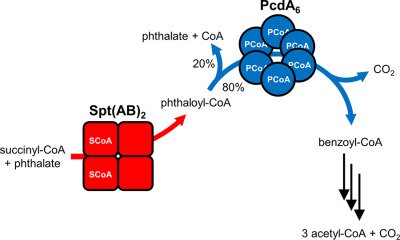
Xenobiotic phthalates are industrially produced in the million ton scale. Their degradation by denitrifying bacteria proceeds via phthaloyl-CoA that is decarboxylated to benzoyl-CoA. We identified a CoA transferase that produces phthaloyl-CoA, an extremely instable CoA-ester with a half-life of minutes. Cells compensate for this instability by a massive overproduction of the decarboxylase for efficient phthaloyl-CoA decarboxylation at sub-micromolar concentrations. Anaerobic phthalate degradation is an unusual example for an evolving xenobiotic degradation pathway.
RbpA and σB association regulates polyphosphate levels to modulate mycobacterial isoniazid-tolerance
- Pages: 627-640
- First Published: 25 March 2018
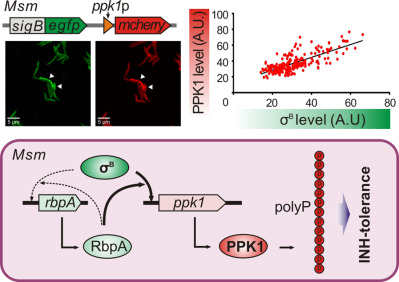
Drug-tolerant cells are a special subgroup of cells that can survive at high concentrations of drugs but without genetic mutations. Here we show a novel regulatory pathway for controlling the formation of isoniazid-tolerant cells in Mycobacterium smegmatis. The stress response sigma factor σB associates with its activator RbpA to regulate the expression of ppk1 gene, which encodes the polyphosphate kinase, to control the intracellular polyP levels and isoniazid-tolerance.
Altering Neurospora crassa MOB2A exposes its functions in development and affects its interaction with the NDR kinase COT1
- Pages: 641-660
- First Published: 30 March 2018
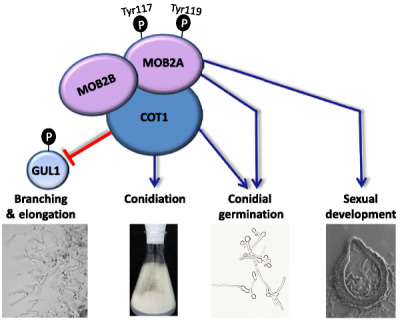
Mutating residues Tyr117 and Tyr119 of the N. crassa MOB2A protein revealed that in addition to the role MOB2A/B have in hyphal elongation/branching and conidiation, they are involved in regulation of conidial germination. The slow maturation of perithecia and a lack of ascus alignment in the mutants demonstrated a role in sexual development. We propose that the mentioned effects may be a result of the impaired interaction between MOB2A and the key MOB2A/B partner – COT1.
Roles of three FurA paralogs in the regulation of genes pertaining to peroxide defense in Mycobacterium smegmatis mc2155
- Pages: 661-682
- First Published: 22 March 2018
Hydrogen peroxide production and myo-inositol metabolism as important traits for virulence of Mycoplasma hyopneumoniae
- Pages: 683-696
- First Published: 06 April 2018
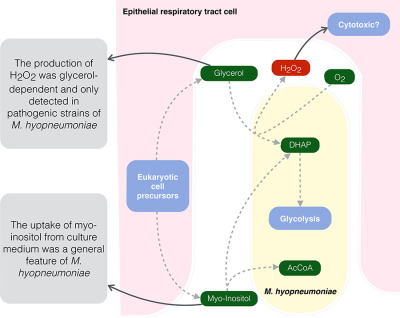
Virulence and pathogenicity of Mycoplasma hyopneumoniae, the causative agent of enzootic pneumonia, has never been fully understood. We present in this work two interesting metabolic traits of M. hyopneumoniae that might be directly related to its enhanced virulence, especially regarding its ability to produce hydrogen peroxide.
Co-evolution with recombination affects the stability of mobile genetic element insertions within gene families of Salmonella
- Pages: 697-710
- First Published: 30 March 2018
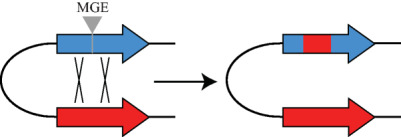
Gene families with multiple copies of the same gene separately located on the chromosome are a frequent feature in prokaryotic and eukaryotic organisms. These gene families present a potential target site for integration of mobile genetic elements. Our results indicate that homologous recombination can protect genes within gene families from inactivation by mobile genetic elements, but for shorter gene sequences the efficiency of repair is very low.




